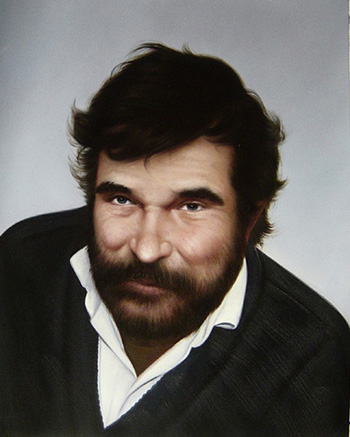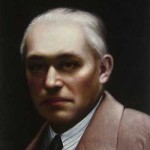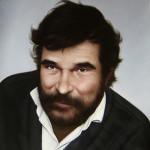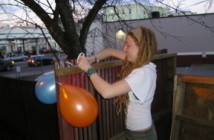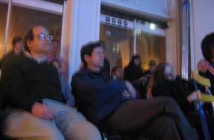There’s something in the air at Joe Zane’s terrific solo show at Allston Skirt. Titled Personality, these diverse works of sculpture, painting, drawing and audio tackle the increasingly difficult question of what it takes for an artist like Zane to arrive at an original work of art. Like many artists in the wake of conceptualism, he’s aware of the developments that have proceeded him, and like an ingenious outsider has come up with ways of insinuating himself into these traditions while simultaneously bringing them up to date. Appropriation art loomed large as a distant cousin to this show, which traffics in fakes and impersonations. Zane takes up the problematic nature of authorship, and by extension the phenomenon of the artistic personality, which has proved flexible and persistently alluring even in our digital age of clones, simulations and copies. What gives this exhibition its fresh appeal is the way Zane has found his way into the subject; consistently choosing the back roads and byways to draw you into a different account of art’s relation to its makers and the culture at large.
Take the story that unravels as you meet a series of benign-looking oil paintings hung at eye level along the gallery’s main exhibition wall. Zane presents eight photorealistic portraits of Caucasian men arranged chronologically from left to right. A wall label below each painting details its provenance and provides some information on the subjects. All of the men were forgers of art, each famous for reproducing the pictures of a few specific artists. Deft conceptual closure is provided by the fact that Zane had these portraits of forgers produced by anonymous artists working at a mass production paintings facility in China. Yet in spite of this neat circularity, the piece refuses to sit still, giving rise to many questions.
Most of these questions have something to do with the relations between artists, the practice of art, and its institutions. But far from being diagrammatic and dry, the questions reveal a hotly contested territory. For what do I imagine were the relations between the forgers and the institutional art world? Zane’s research uncovers all sorts of juicy material, from Eric Hebborn’s declaration that art experts were “vulgar, avaricious creatures”, to Tom Keating’s crude messages buried in the underpainting of his forgeries. How did these artists resign themselves to the production of fakes? Did they believe that art was what they were up to, and if so, did their art have something to do with deception? If the forgers did equate their skill and labor with the moment of art, how might we choose to define artistic labor and skill in today’s information economy? How might these questions be rephrased for the workers who produced Zane’s paintings in China, and how can we begin to describe and account for the array of complex relationships that artists everywhere have to their work?
A compelling feature of this show is Zane’s decision to explore the property of uniqueness through a linked network of persons. Avoiding personality as some sort of radiant essence, he traces it as a thing formed through an extended series of relationships. Earlier appropriation art often undermined the authenticity of an object through the production of a copy. When the artist Sherrie Levine made a new photograph by rephotographing a famous picture by Walker Evans, she opened up a dual relationship between herself and her precursor. Zane compounds the presence of at least three sources in the making of the work, so at the same time you have the fakes, their inspirations, and the artist himself all lodged in the art. Instead of destabilizing authority through a strategy of duplication, Zane gathers momentum with a process resembling a blog, drawing together multiple voices that ricochet off the surface of conventional appearances.
In the background, Bon Jovi’s “Living On A Prayer” blasts over the gallery speakers. Or does it? Zane has researched rock tribute acts that have made their own names covering once-famous material, and created an audio piece styled like the nostalgic play list of an older brother’s iPod. The compilation is a familiar soundtrack to anyone who grew up through the seventies, featuring songs from artists like Aerosmith, Ozzy, Billy Joel, and Elvis Costello. Here the canon of late classic rock is given a respectful salute. The bands’ renditions avoid camp, personal inflection, or interpretation of the material. I wondered what a cover version of the Human League or Devo might sound like.
This analogy between rock tribute bands and the forgers of famous paintings hints at the paradox that originality itself lies somewhere in the vicinity of performance. For what are the bands striving for if not the internalization of the spirit of their role models, displayed in the performing body through stance, gesture, and attitude? Comparably, what is the surface of a painting if not the intimate record of a performance between the artist’s body and the materials he moves across the canvas? And by extending this analogy, don’t we enact who we are by taking in the performance of others, rehearsing and living through them as if they were in our own skin?
Every student of art participates in this as they pick up a volume of art history, particularly the monograph. Books are literally bodies of knowledge, and the student that cradles the monograph is conducting an intimate relationship with what has come before. Fingers and eyes appraise and commingle with the body of work, rehearsing what it might be like to one day be found in these pages. No series of art books has a more recognizable luster than the tomes produced by Phaidon press. Consistent in design and format, the Phaidon monograph itself has become the perfect vehicle of artist branding. Coveted by artists everywhere, it is an indisputable seal of international acclaim.
In one of the show’s standout pieces, Zane produces his own fake Phaidon monograph. Deployed as a sort of support material, it sits innocuously on a desk in the gallery, its cover image of the artist’s face rendered in paper mache blinking dumbly through the boldly emblazoned letters of his name. Like a newly opened chain restaurant, the book’s format is followed with a clear nod to the company line, and features interviews and selected writings as well as copious illustrations. Folding history in a publicity stunt, Zane short circuits paying his dues and shoots straight for the payoff, planting a virtual milestone at the beginning of his career.
Links:
Allston Skirt Gallery
Joe Zane's website
Gimme Gimme Portraits: An Interview With Joe Zane by Anneka Lenssen in Big RED #18
"Joe Zane: Personality" is on view March 3 - April 1, 2006 at Allston Skirt Gallery.
All images are courtesy of the artist and the Allston Skirt Gallery.

